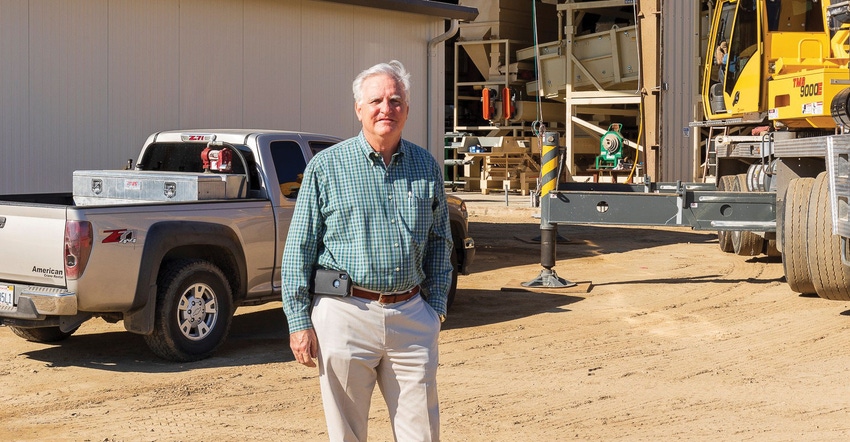
Although the Central California Almond Growers Association in Fresno County has been in business since 1963, this year has been different from most.
“Significantly so,” president and CEO Michael Kelley said. “First off, we’re bringing in what will be a record crop for the state and for our association. We’re probably going to be at 152 million pounds of meat, compared to last year’s 136.4 million pounds, so it’s a bigger crop by a large margin.
“It’s also been a difficult crop to shell out,” he said. “Wildfire smoke prevented the crop from drying out like it normally would, so we had to deal with a lot of moist almond hulls that made it difficult to shell efficiently. We had to slow down our plant in order to accommodate the wetness factor.
“Basically we couldn’t get the nut to pop out like it normally would if it was a clean dry product and that caused the season to run longer which caused costs to run higher as we had to bring in more labor to run the longer haul period.”
So when does the extended season wrap up? “All of our fields have brought in product already and we’re projecting we’ll probably finish a bit before Christmas,” Kelley said. “Had we not had this situation with wet product, we’d probably have been done by about the end of November, but this year we’ll be adding another 3 weeks or so beyond our traditional deadline.”
The headaches come in a year when CCAGA upgraded its main plant, Kerman Plant No. 1, to accommodate an anticipated 165 million pounds of hulling and shelling capacity from a membership base expected to soon have over 60,000 pounds of almonds.
When the CCAGA formed as a cooperative in 1963 only the hulls could be removed at the association's single plant in Sanger, Calif. Since then the association has grown to become the world's largest huller and sheller of almonds with its original plant in Sanger and three plants on a single site near Kerman.
More moist than usual
“When crop is delivered, we’re able to shell out about 40% of that delivery on a daily basis,” Kelley said. “The rest goes into the stockpile yard where it’s piled and fumigated to kill any bugs while it awaits shelling. This season’s piles were more moist than usual. The softshell varieties, the earlier Nonpareil, Independence, and Sonora varieties had very pliable hulls due to the wetness.”
That wetter-than-usual situation brought about due to the earlier wildfires brought with it some additional problems. “We had to contend with a high level of navel orangeworm,” he said. “In fact, in the Central Valley as well as the southern San Joaquin Valley, it seemed like NOW was pretty bad this year, so that took a little weight out of the crop early on.”
Sizing was also different with this year’s harvest. “It got better as the crop progressed, but early on we had a lot of pee wees and doubles,” he said.
With the season nearing close-out, Kelley reflected: “It’s been a real hodge-podge year involving a lot of different stressors that made it a not-so-much ideal crop to shell. It’s gratifying because it’s a record crop, but it taught us some lessons about what we need to do in smoky weather conditions and the other stressors that come along with a record crop. We’re going to have to be more efficient because in the years to come our industry will only get stronger and crops larger.
“The almond hulling and shelling portion of the tree nut category has always been here to meet the demand of an industry growing at a phenomenal rate and we know there will be bigger crops in the future. We feel we’re taking actions to be ready for that next tidal wave that’s going to be coming in the years ahead.”
For more news on tree nuts as reported by growers and farm advisors, subscribe to the Tree Nut Farm Press e-newsletter.
Read more about:
AlmondsAbout the Author(s)
You May Also Like




